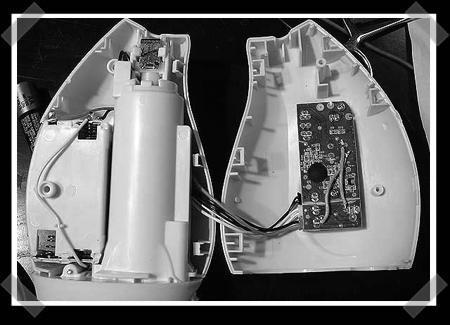
[sixerdoodle] sent us this nice firefly project that serves as an intro to charlieplexing. We’ve mentioned charlieplexing before, in our LED Life post and the Breath Controlled LED candles post. This project is quite simple and focues mainly on how to make a charlieplexed circuit work.
The goal was to create a tiny firefly bottle with SMD LEDs and as few wires as possible. In the video, after the break, it is hard to tell just how small this thing is until we see the battery. There are clear directions and fantastic pictures detailing exactly how to set up a charlieplexed circuit with 6 LEDs.
















